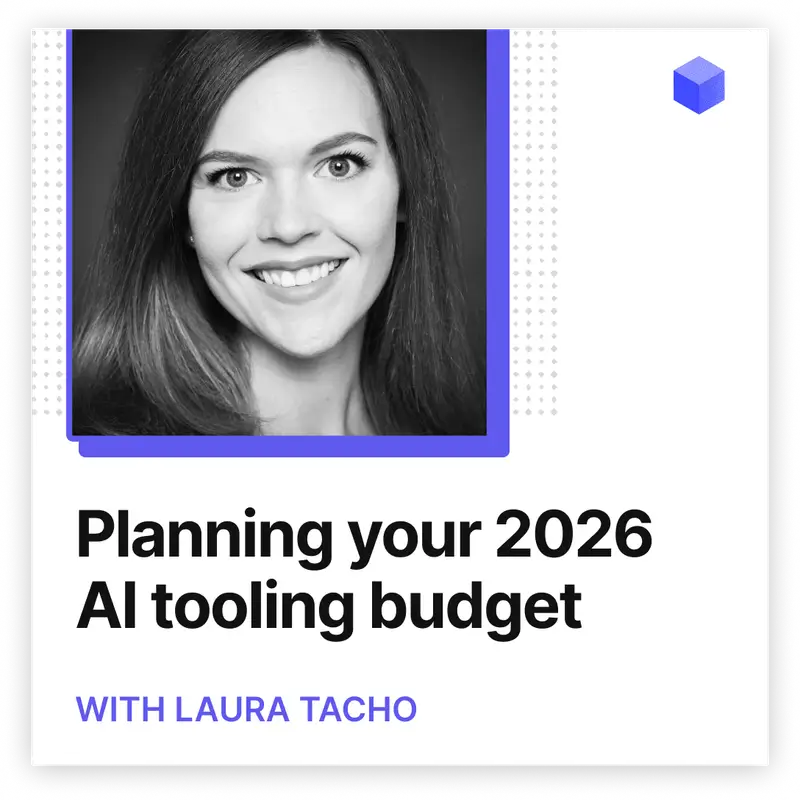Planning your 2026 AI tooling budget: guidance for engineering leaders
In this episode of Engineering Enablement, Laura Tacho and Abi Noda discuss how engineering leaders can plan their 2026 AI budgets effectively amid rapid change and rising costs. Drawing on data from DX’s recent poll and industry benchmarks, they explore how much organizations should expect to spend per developer, how to allocate budgets across AI tools, and how to balance innovation with cost control.
Laura and Abi also share practical insights on building a multi-vendor strategy, evaluating ROI through the right metrics, and ensuring continuous measurement before and after adoption. They discuss how to communicate AI’s value to executives, avoid the trap of cost-cutting narratives, and invest in enablement and training to make adoption stick.
Laura and Abi also share practical insights on building a multi-vendor strategy, evaluating ROI through the right metrics, and ensuring continuous measurement before and after adoption. They discuss how to communicate AI’s value to executives, avoid the trap of cost-cutting narratives, and invest in enablement and training to make adoption stick.
Where to find Abi Noda:
• LinkedIn: https://www.linkedin.com/in/abinoda
• Substack: https://substack.com/@abinoda
Where to find Laura Tacho:
• LinkedIn: https://www.linkedin.com/in/lauratacho/
• Website: https://lauratacho.com/
• Laura’s course (Measuring Engineering Performance and AI Impact): https://lauratacho.com/developer-productivity-metrics-course
In this episode, we cover:
(00:00) Intro: Setting the stage for AI budgeting in 2026
(01:45) Results from DX’s AI spending poll and early trends
(03:30) How companies are currently spending and what to watch in 2026
(04:52) Why clear definitions for AI tools matter and how Laura and Abi think about them
(07:12) The entry point for 2026 AI tooling budgets and emerging spending patterns
(10:14) Why 2026 is the year to prove ROI on AI investments
(11:10) How organizations should approach AI budgeting and allocation
(15:08) Best practices for managing AI vendors and enterprise licensing
(17:02) How to define and choose metrics before and after adopting AI tools
(19:30) How to identify bottlenecks and AI use cases with the highest ROI
(21:58) Key considerations for AI budgeting
(25:10) Why AI investments are about competitiveness, not cost-cutting
(27:19) How to use the right language to build trust and executive buy-in
(28:18) Why training and enablement are essential parts of AI investment
(31:40) How AI add-ons may increase your tool costs
(32:47) Why custom and fine-tuned models aren’t relevant for most companies today
(34:00) The tradeoffs between stipend models and enterprise AI licenses
Referenced:
- DX Core 4 Productivity Framework
- Measuring AI code assistants and agents
- 2025 State of AI Report: The Builder's Playbook
- GitHub Copilot · Your AI pair programmer
- Cursor
- Glean
- Claude Code
- ChatGPT
- Windsurf
- Track Claude Code adoption, impact, and ROI, directly in DX
- Measuring AI code assistants and agents with the AI Measurement Framework
- Driving enterprise-wide AI tool adoption
- Sentry
- Poolside


